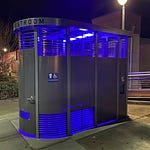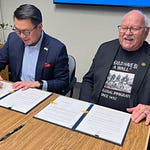While Clallam County struggles to meet the basic needs of its residents, one small but politically powerful tribe received over $19 million in federal funding in a single year—plus a taxpayer-funded housing liaison created just for them. With no job description, no transparency, and no oversight, county leaders are quietly funneling public resources toward those who already have the most. Is this equity—or entitlement?
In 2021–2022 alone, the Jamestown S’Klallam Tribe received over $19.6 million in federal grants, according to public audit data submitted to the federal government. That number is more than double what the Tribe received just two years earlier—and the growth is striking.
For a Tribe with just over 500 enrolled members, around 209 of whom live in Clallam County, this level of federal support is substantial. Especially when compared to the ongoing economic struggles faced by the broader population in Clallam County.
The Tribe has a right to seek and receive funding—but is our public funding system really fair and equitable for all?
The numbers: what $19.6 million buys
The report showed:
$5.4 million came from COVID relief funds via the American Rescue Plan
$3.1 million went to tribal self-governance through the Department of the Interior
Another $2.9 million funded tribal health services under IHS compacts
Nearly $2.1 million was awarded for Pacific Coast salmon recovery
Over $1.2 million was allocated through the Coronavirus Relief Fund
Smaller amounts supported housing, victim services, mental health, environmental programs, childcare, elder care, economic development, and more
These funds are federal—not county—but they represent a major inflow of resources to a very small population.
And yet, local agencies and nonprofit partners are now layering even more taxpayer-funded services on top of this. That’s where the equity question becomes unavoidable.
The liaison no one else gets
After a $50,000 donation from the Jamestown Tribe, Habitat for Humanity of Clallam County recently created a Native American Housing Liaison position.

Despite repeated public requests, Habitat has refused to release the job description for this publicly supported role. Members of the public asked the Clallam County Commissioners to pause an $800,000 grant to Habitat until the job description could be reviewed.
Instead of pressing for transparency, Commissioner Mark Ozias—who also serves as President of the North Olympic Development Council (NODC)—instructed the public to view a slideshow that the liaison had presented to the very nonprofit Ozias leads.
That slideshow is available here: NAH NODC 2025 Presentation.
This is not a job description. It is a vague marketing presentation, with no performance metrics, no oversight details, and no clear criteria for success—just a series of general goals, many of which appear focused on cultural outreach and event preparation.
One slide, for example, describes plans for “Canoe Journey 2025 Partnership” involving AmeriCorps volunteers who will powerwash, paint, remove junk, and spruce up areas in advance of the tribal-hosted cultural event. Is this a housing strategy—or taxpayer-subsidized festival prep?
Meanwhile, many other struggling groups across Clallam County—such as working-class families, disabled veterans, or low-income seniors—face significant housing and economic challenges as well. Yet it’s rare to see the same level of concentrated investment, dedicated positions, and formal partnerships built specifically around their needs. When one group receives layered public support on top of exclusive federal resources, it raises important questions about balance and fairness.
Equity is a two-way street
The Jamestown Tribe operates like a government, and it is—a sovereign nation with its own council, courts, planning departments, housing authority, fisheries, and healthcare systems. It has access to exclusive federal programs like:
Indian Housing Block Grants
IHS Self-Governance Compacts
BIA Housing Improvement Program
Section 184 Tribal Home Loan Guarantees
Indian Community Development Block Grants
Title VI Tribal Loans

They also operate and benefit from enterprises like Jamestown Excavating, 7 Cedars Resort, a casino, a golf course, dental clinics, and other for-profit businesses. These are self-funded, sovereign, and separate from the county.
So the question isn’t whether the Tribe should receive federal grants. The question is why, in a county struggling with affordable housing, homelessness, and economic stagnation, taxpayer dollars are being funneled through nonprofits to provide additional targeted support to an entity that already has robust, dedicated federal resources.
What about everyone else?
Where’s the oversight?
Adding to concerns is that the Tribe does not share its full audit reports on the federal transparency portal like other recipients do—entering “chose not to share” in some fields. Instead, the public sees only a partial picture—grant names and totals, without performance data, audit findings, or spending breakdowns.
When millions are at stake—and when federal and local partnerships overlap—transparency becomes non-negotiable.
We can support without overcompensating
No one disputes that the Jamestown Tribe has done an admirable job leveraging federal opportunities. But that doesn’t mean other residents should be overlooked, or that public and nonprofit dollars should be used to duplicate services that the Tribe already provides for its own citizens.
Equity means fair access and balanced priorities. In a county where many residents are living paycheck to paycheck, it’s fair to ask: Are we really spending our shared resources in a way that serves all of us?
Last Equitable Wednesday, readers were asked if they feel that the Climate Commitment Act has delivered fair and visible benefits to rural communities like Clallam County. Of 178 votes:
1% said, “Yes”
81% said, “No”
14% said, “Haven’t noticed any benefits”
3% said, “Don’t know enough about it”
















